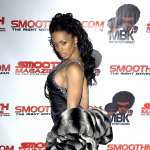As Kim Kardashian defends her recent shoot with “Paper Magazine,” one person is being overlooked that deserves more scrutiny. Photographer Jean-Paul Goude created the image of Kim’s rear end in the likeness of an exaggerated piece he made in the 70s. Upon looking at his works from that time, he is clearly obsessed with black women and does not hide this. His career puts a spin on the shoot with Kim, placing it under appropriation. After reviewing his collection over the years, it is not a stretch to say he and Kim Kardashian have a thing for exploitation.
Goude’s book “Jungle Fever,” shows his troubling art focused on black women. He describes in a later book how he spent years working on “Jungle Fever,” and wanted it to show his feverish attraction to black women. This carefully assembled collection puts on display his search for the ‘African’ features he desires. One example features a ‘cosmetic scar’ he designed for black women. When describing it he says “they emphasize the savage aesthetics of the face.”
He proudly mentions in the book how he tried to get his first girlfriend, Michele, an Alvin Ailey dancer, to have surgery done to her nose so it would look proportionate to her body. (There is a piece in the book with the before and after of his first girlfriend appearing to have a nose job.) He displays cutouts of her showing off her body, but there is no sense of his appreciation of her being deeper than her physique. Even as he describes his amazement at her dancing, it is more about her being a dark-skinned dancer in the theater world with bigger hips than her white counterparts.
This girlfriend eventually became “locked into as Afrocentric rhetoric,” as he describes in a different book. Rather than trying to understand this perspective, he dismisses it as something that excludes him from enjoying his fantasies. This is an actual quote from Jungle Fever about his take on Black Power:
“Blacks and I were drawn to each other for some of the same reasons but to different ends. The politics of Black Power didn’t interest me as much. I knew its existence was justified but as a white I felt a little left out, to say the least. Also, I could not get interested in their comic-book rhetoric. My enthusiasm was aesthetic. Whatever the reason, most blacks back then were interested in Africa, their interpretation of Africa, but so was I!”
You can interpret what he meant by that for yourself.
Goude is also obsessed with height, and mentions disappointment in his first few black girlfriends being shorter than he desired. He had special shoes made for his second girlfriend, Radiah, to make her taller, and a dress to conceal them. When she has them on, she reaches 7 feet tall and barely looks like she can walk in them. Apparently, the idea that black women come in all different shapes and sizes was not something he desired.
His search for the ‘perfect’ black woman led him to creating art pieces with what he felt his previous girlfriends lacked. There is a sketch in his book conveying this called “The Ideal Woman,” where he draws what appears to be him admiring a 7-foot tall black women with a butt similar to Sara Baartman, also known as Hottentot Venus. In the second part of this, he lives out his fantasy of having sex with her.
The video below illustrates the premise of his photo shoots.
His third girlfriend, Toukie, was one of the subjects of this phase of his art. He manipulated pictures and created small figurine models with what he craved in a black woman. He wanted his girl to have a horse’s ass, and sounds like one talking about it:
“I have always admired black women’s backsides, the ones who look like racehorses. Toukie’s backside was voluptuous enough, but nowhere near a race-horse’s ass, so I gave her one. There she was, my dream come true, in living color.”
This obsession is what probably led him to making “Carolina Beaumont,” the piece he recycled for the Kim Kardashian shoot. Understandably, his girlfriend did not like this. He ultimately breaks up with Toukie, as described in this passage:
“To my disappointment, Toukie hated what I did. I think it was the main reason for our separation. She did not share my views; my fantasies definitely had nothing to do with hers. I saw her as this primitive, voluptuous girl-horse. She preferred champagne, caviar, and the life you see in the pages of Vogue.”
Grace Jones, Goude’s former girlfriend, is the main subject of his book. He does not try to alter her in the same way he did his previous girlfriends, mostly because he believes her to be perfect. However, he likens her to an animal on the cover of his book by placing her in a cage with meat. An alternate version of this piece named Grace in a cage even features a ‘Do Not Feed The Animal’ sign to make the message clear. This piece features a reoccurring theme in fashion and art where black women are not allowed to be human. Interestingly his male subjects of different ethnicities are not characterized like this. Rarely in the book does he show nude males or ones depicted in a subhuman way.
Not all of Goude’s works show off his eroticism. He has created some iconic art with Grace Jones that challenges the perception of beauty. But some of his art does not do well by his subjects or black women in general. For someone who claims to love black women, he has a rather narrow view of what black beauty is. Perhaps it is because of his collaborations with Grace that his previous endeavors with former girlfriends are now viewed as art instead of soft porn. Even in reflecting on this phase of his career in a later book, he tries to justify his art rather than admit how dehumanizing it can be.
Like TheUrbanDaily.com on Facebook!
<p>Facebook Live Is Loading....</p>





